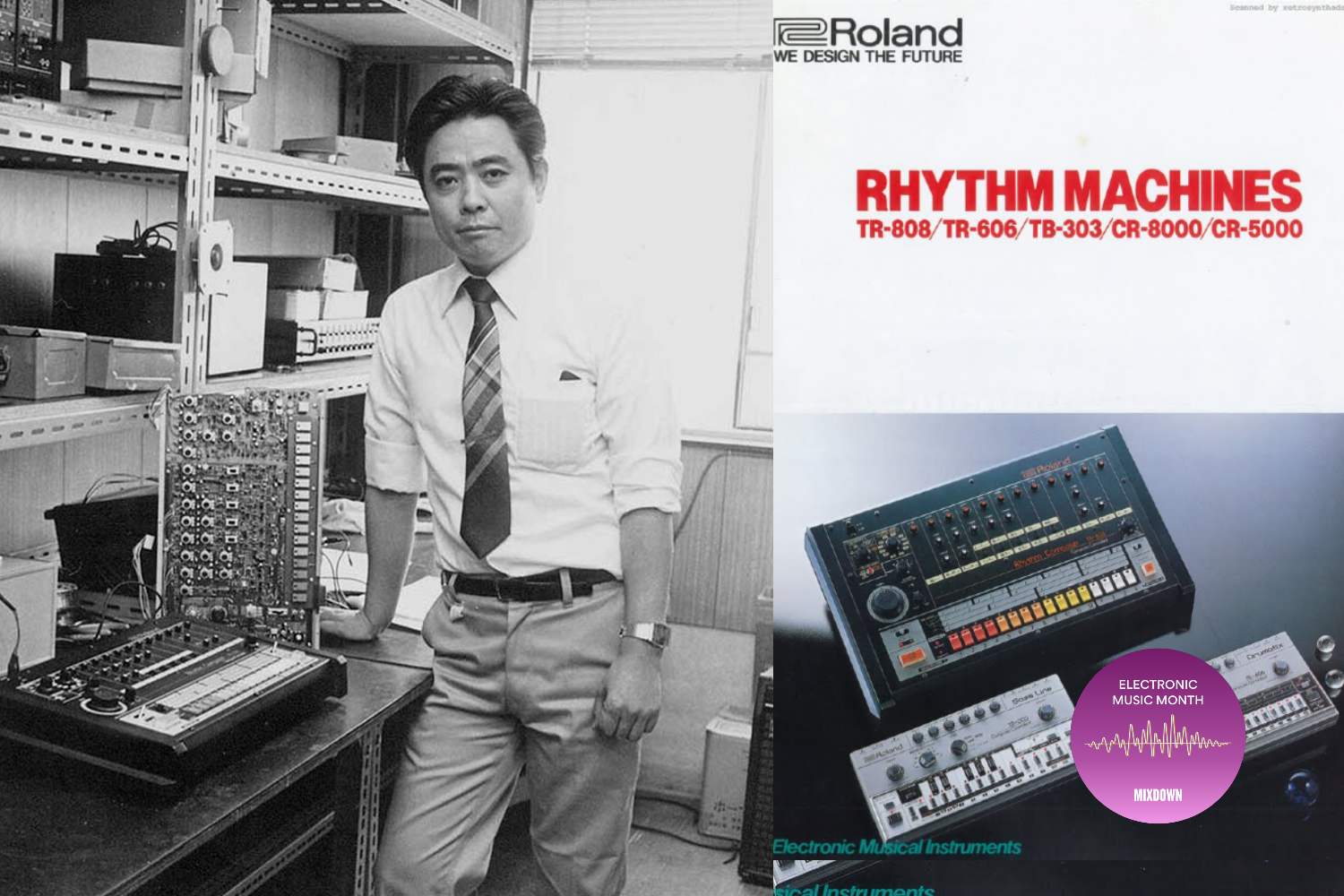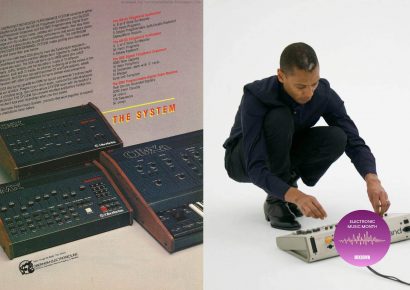Much more than just a metronome
When drum machines first landed on the scene, we can assure you it was with the most organic of intentions. With their metronomic consistency, superhuman stamina and remarkable ability to show up to the gig on time, drummers of the human variety really had their work cut out for them, trying to compete with the futuristic beat boxes.
By the time the 1980’s rolled around, drum machines had moved away from sheer imitation, becoming a singular voice unto themselves, in the process, birthing countless electronic genres including techno, synth-pop, acid-house, industrial and various flavours of hip-hop. Even with such a rich history, the drum machine still has its share of critics, their soulless mechanical repetition and system destroying low-end drawing the ire of many a rockdog. Here at Mixdown, we can’t get enough of them and it’s with this in mind that we have scoured the ten-year-old forums and squinted through the haze of Berlin basements to bring you our list of Mixdown’s Greatest Drum Machines of All Time.
Read all the latest features, columns and more here.
We’re taking a little break here at Mixdown and so should you. We’re reposting some old favourites of yours and ours!
Any ‘All Time’ list is going to require some rules, and with drum machines, it very quickly becomes a matter of semantics, as the line between drum machine and samplers and synthesisers remains forever blurry. We chose not to include single voiced drum synths which omits a couple of heavy hitters; the Synare (made famous by appearing on Joy Division’s Unknown Pleasures) and the Pearl Syncussion used more recently by Aphex Twin on his post-sabbatical masterpiece Syro, for example.
Furthermore, any machine whose primary function is sampling also doesn’t count (which is a bitter pill to swallow given the years producers have spent combining samples from most the machines on this list into the perfect palette on an MPC 1000), cutting out many of the classics; the hip-hop crunch of the Emu SP-1200, the undisputed jungle time-stretch mastery of the Akai S950 or the obscure allure of the Dynacord Add-One. We’ve also omitted Rhythm Arrangers, opting instead to only feature machines that allow you to program your own beats, so Wurlitzer weirdos that want to talk about the early automatic rhythm accompaniments can save their gushing for the comments section. And so, with the ground rules in place (and no count-in required) – behold Mixdown’s Greatest Drum Machines of All Time.
10. Alesis HR-16
Increasingly and deservedly so, Alesis are finally getting the recognition they deserve as an affordable darkhorse in the vintage gear scene. The HR-16B is easily the most affordable unit on this list, but don’t let the price tag fool you. The HR-16’s incisive 16-bit digital samples shine in their simplicity and the comfort with which they sit in a final mix. Utilitarian to the core, the Alesis HR-16 is the poster child of a whole sub-section of digital drum machines of the late ’80s (Yamaha RX15, Casio RZ-1, Kawai R100) – boxes that offer a similar palatably processed sound perfect for synth-pop, post-punk and industrial techno applications.
The caveat as you can probably tell at first glance is the limited tactile functionality, but this is the trade-off for the price. There’s 49 stock sounds to work with, and a slightly different set on the later HR-16B model. Being digital they also offer hackability and customisation; custom Eproms to load samples of many of the other machines on this list are available on eBay (and probably cheaper via forums/local synth listings) as well as scope for crazy glitches and distortion if you’re looking for more abrasive tones. The possibilities of this box in particular are impressive (just check out this modified HR-16 by the mastermind behind the Emu SP-1200 clone). Famed for being the drum machine used on Stereo MC’s track ‘Connected’ as well as ’90s heavyweights Orbital, this modest drum machine still stands up today. Don’t be surprised to catch sight of one on-stage setting the pace for your local gloomy post-punk band.
9. Roland CR-78
The Roland CR-78 might be called a ‘Rhythm Arranger’ (which we promised to omit), but the fact that it was one of the first units to feature pattern programming means that it definitely qualifies. In fact, only the PAiA Programmable Drum Set precedes it in regards to programmability (and even that was a DIY kit with a very limited sound.)
The Roland CR-78 however, signifies the sonic mid-point between the rhythm arrangers before and the programmable TR series that followed, not to mention being the first drum machine to incorporate a microprocessor. Needless to say, it made no small impression on the pop landscape, with producers making use of its snappy synthetic tones and bouncy percussion to great effect. It’s classy sound is also wonderfully versatile, being used by greats such as Roxy Music, Blondie and Radiohead, synthpop pioneers such as Gary Numan, Ultravoxx and John Fox right through to electronic producers Underworld and Fat Boy Slim. While not as much of a household name as its famous nephew, the universal appeal of CR-78’s sonic output, combined with its undeniable historical importance, definitely earn the CR-78 a seat at the table amongst the greats.
8. RSF SD-140
Having been around the block in the world of electronic instruments, we here at Mixdown have had the pleasure of playing most of the machines listed in this article, firsthand. The RSF SD-140 however is a rare, rare beast (and a different kettle of fish all together). It’s very rarely seen listed for sale (even across the global markets we fiendishly monitor), let alone encountered in real life. It caught popular attention in the electro world recently when Fact Magazine covered a story of DMX Krew building his own sample-based drum machine from scratch after his SD-140 was stolen and he was unable to replace it.
What sonic beast inspires such madness? Tonally speaking, it’s a crunchy AF, lo-fi, 8-bit sample-based affair, with no anti-aliasing (removing of unwanted high-end artefacts) built into its sampling functionality, meaning a particularly unique sonic fingerprint from the mysterious machine. It makes the list here based on the strength of the few demos we’ve heard combined with the mammoth undertaking DMX Krew took to replace his. Reviews from 1987 offer a harsh critique of its interface, and one look at its membrane buttons and tiny screen ease the gear lust slightly, but this is par for the course in the realm of late ’80s crunch. It’s also been used by techno overlord Aphex Twin, just in case you needed another reason to lay awake at night, dreaming of attaining one.
7. Roland TR-606
Well, you probably already had an inkling that the OG Roland TR range would feature heavily on this list, but perhaps this modest silver box wouldn’t be the first box to come to mind. It’s simple and unpretentious and easily the cheapest entry into the analog world of vintage Roland (excluding the Boss DR range). As it’s iconic design suggests, it was made as an accompaniment to the famous TB-303 bass line synthesiser that invented Acid in the mid-1980s. It doesn’t have tone control, it doesn’t have individual outputs and it’s quite noisy when you don’t want to risk running it on giant D-cell batteries and use its power supply.
So, why does it make the cut? Apart from its wide use in the ’80s thanks to its egalitarian price point, it typifies the puritan simplistic approach to classic sounds; adding warmth and playful punch to whatever track it touches. It’s silver tact switches inspire you to create and its portability make it the perfect mobile companion for anyone on the go. While it tonal signature may be some of the thinnest of the original analog TR range, the hi-hats deserve special mention and the 606 hats are often cited as the best of TR series.
A testament to its appeal is its wide variety of application; it’s all over synthpop classics by Orchestral Manoeuvres in the Dark, techno rinsers by Mr Oizo, electro bangers by Luke Vibert and Aphex Twin, industrial grinds by Nine Inch Nails, hard punk jams by Big Black and sleek jams by Moby. Heck, Kid 606 even named himself after this unassuming little box!
6. Dave Smith Instruments Tempest
Here we have the most recent drum machine on this list (and therefore potentially the most contentious to the vintage kings out the); the Dave Smith Instruments Tempest. Initially released in 2011, with further firmware revisions being supported as recently as 2017, the Tempest has garnered a very strong reputation in a very short amount of time.
Whenever you create an ‘All Time’ list, it’s always hard to gauge where contemporary products should sit; how will time judge their legacy? Certain collaborations, however, are hard to ignore, and none more in the drum machine world than the programming genius of Roger Linn, the brain behind both the Linn Drum and the original Akai MPC, with synth design royalty Dave Smith (Sequential Circuits / Dave Smith Instruments) also on board for the ride. The Tempest has to be one of the most flexible and diverse drum machines ever built, its six identical digitally controlled analog synth voices are designed for percussive tones but can also be played as a polyphonic synthesiser. It intelligently fits effects into an all-analogue signal path by using MIDI echoes for delays, as well as analogue compression and distortion.
The Akai MPC series Roger Linn pioneered became synonymous with an impeccably precise sequencer clock and the velocity-sensitive pads that J-Dilla and Dr Dre made famous, and the evolved version of these features are very much present in The Tempest. The kind of sophisticated velocity and pressure sensitivity properties, present on the Tempest, simply can’t be found anywhere else on this list. Producers expounding the virtues of the Tempest aren’t in short supply either and we’re willing to bet on the Tempest continuing to garner much praise in the years to come (Sequenital actually confirmed on 25/6/20 that the Tempest would be retired from manufacturing, so no doubt prices will stagger upwards). In the words of co-creator Roger Linn “Tempest is incredibly deep and remarkably functional. In my opinion has no competition for what it does.” Touché Rog.
This article was originally published July 1, 2020.
Explore the second part of our Greatest Drum Machines of All Time here, and be sure to reacquaint yourself with all our favourite synths of the ’80s.







